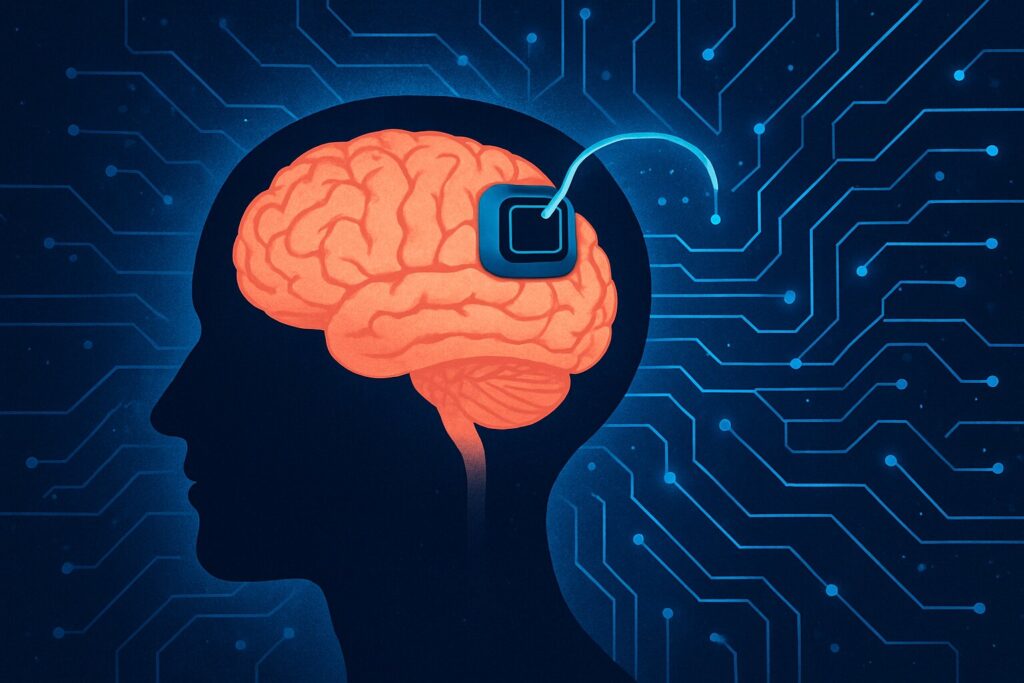Introduction
Imagine controlling your phone with a thought, restoring movement to a paralyzed limb, or even merging your mind with artificial intelligence. Elon Musk’s Neuralink is transforming science fiction into reality through brain-computer interface technology. Using microscopic electrode-embedded threads connected to a wireless device, Neuralink creates direct communication between the brain and external systems. This technology promises revolutionary medical applications for neurological conditions while potentially enabling thought-controlled digital interfaces and cognitive enhancement. Despite its promise, Neuralink faces significant technical, biological, and ethical challenges as it progresses from experimental to practical applications—ultimately raising fundamental questions about the future relationship between humanity and technology.
What is Neuralink?
Neuralink, launched in 2016 by Elon Musk, is a company with a bold mission: to connect human brains directly to computers. The goal? To treat neurological disorders, restore lost abilities, and eventually enable a symbiotic relationship with AI. Think of it as a bridge between your mind and the digital world.
At its core, Neuralink is developing a tiny implantable device called the “Link.” Smaller than a coin, this device is packed with thousands of electrodes that can read and stimulate brain activity. It’s like a Fitbit for your brain, but with far bigger ambitions.
How Does Neuralink Work?
Picture this: a futuristic robot surgeon delicately implants a Neuralink device into your brain. Don’t worry—it’s minimally invasive, thanks to Neuralink’s custom-built surgical robot, which inserts ultra-thin electrodes with precision. These electrodes, thinner than a human hair, tap into your brain’s electrical signals, allowing the Link to “listen” to neurons and, in some cases, “talk” back by stimulating them.
The Link wirelessly connects to external devices like your smartphone via Bluetooth. Imagine playing a game or typing a text just by thinking about it. Neuralink’s tech is designed to make this seamless, with potential applications far beyond gaming.
Neuralink’s Progress: From Pigs to People
Neuralink has already made waves with its early experiments. In 2020, the company showcased pigs with implanted Links, demonstrating real-time brain activity monitoring. A year later, a monkey named Pager played Pong using only his mind—pretty mind-blowing! By 2023, Neuralink received FDA approval for human trials, a massive milestone. In early 2024, the first human received a Neuralink implant, with initial results showing they could control a computer cursor with their thoughts.
These achievements highlight Neuralink’s rapid progress, but the company is still refining the tech to ensure safety and scalability. With each step, Neuralink is proving that BCIs are no longer just a dream.
The Potential: Healing, Enhancing, and Beyond
Neuralink’s applications are as exciting as they are diverse. Here’s a snapshot of what it could do:
Medical Marvels: Neuralink aims to treat conditions like Parkinson’s, epilepsy, and spinal cord injuries. For example, it could restore movement or speech to those with paralysis, offering hope to millions. It might even help manage mental health issues like depression by precisely stimulating brain regions.
Superhuman Upgrades: Beyond medicine, Neuralink could enhance cognition—think faster learning or perfect memory recall. Imagine streaming music directly to your brain or diving into immersive virtual reality without a headset.
Human-AI Fusion: Musk’s long-term vision is to keep humanity competitive with AI. Neuralink could let us “merge” with AI, accessing vast knowledge instantly or communicating telepathically. It’s a wild idea, but it’s classic Musk.
The Challenges: Brains, Ethics, and Society
As thrilling as Neuralink is, it’s not without hurdles. Technologically, ensuring the device is safe, durable, and biocompatible is a massive challenge. The brain is a delicate organ, and long-term implants need to avoid rejection or damage.
Ethically, Neuralink raises big questions. Who gets access to this tech? Could it widen inequality? What about privacy—can someone hack your brain data? And if cognitive enhancements become reality, how will society handle “super-brains”? Regulatory bodies like the FDA will also scrutinize Neuralink to ensure safety, which could slow progress.
Public perception is another factor. While some are excited, others are skeptical or downright wary of “chips in brains.” Neuralink must navigate these concerns to gain widespread trust.
The Road Ahead: A New Era for Humanity?
Neuralink is pushing boundaries, but it’s still early days. The company aims to expand human trials in the coming years, with hopes of commercial availability by the end of the decade. If successful, Neuralink could transform healthcare, redefine human potential, and even reshape society. Imagine a world where disabilities are overcome, and our minds are as connected as our smartphones.
But with great power comes great responsibility. Neuralink’s success will depend on balancing innovation with ethical and safety considerations. One thing’s for sure: the future of BCIs is bright, and Neuralink is leading the charge.
Join the Neuralink Journey
Neuralink is more than a company—it’s a glimpse into a future where humans and technology are one. Whether you’re excited, curious, or cautious, there’s no denying its potential to change lives. Follow Neuralink’s updates, share your thoughts in the comments, and let’s discuss what this tech means for humanity. Are you ready to plug in?
Sources:
1. Neuralink Official Website: [neuralink.com] (https://neuralink.com)
2. “Neuralink’s First Human Trial: What We Know,” “The Verge”, January 2024.
3. “Elon Musk’s Neuralink Gets FDA Approval for Human Trials,” “Reuters”, May 2023.
4. “Neuralink Demonstration: Monkey Plays Pong with Brain Implant,” “TechCrunch”, April 2021.
5. “Brain-Computer Interfaces: Ethical and Regulatory Challenges,” “Nature Reviews Neuroscience”, 2022.
6. X Post by @Neuralink, January 30, 2024: Announcement of first human implant success.

